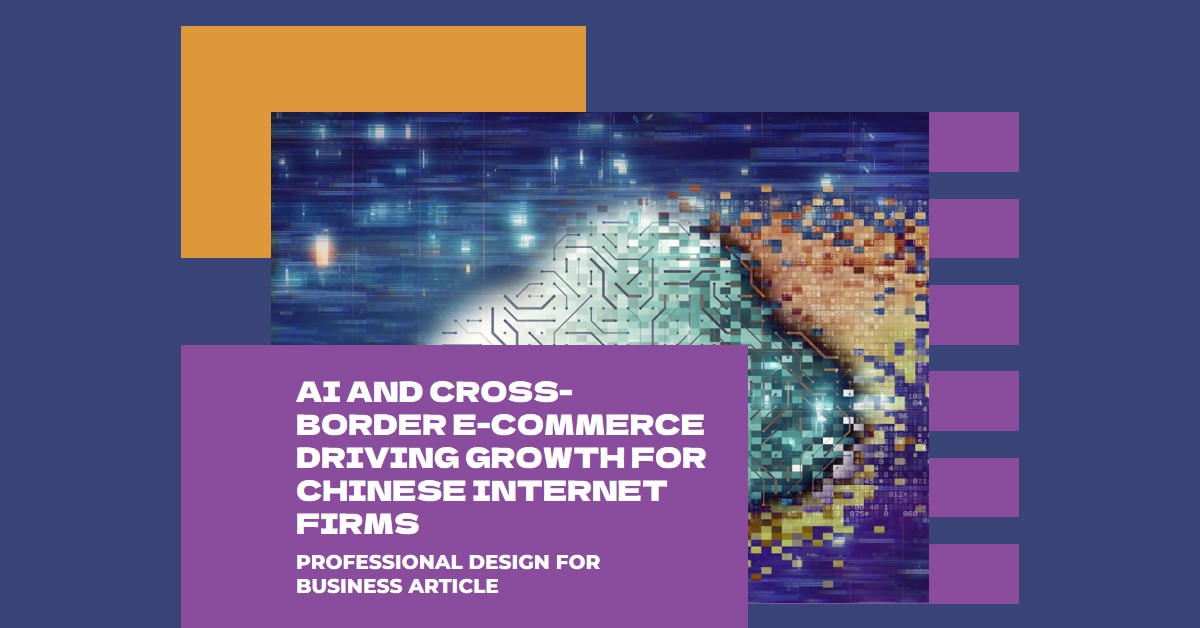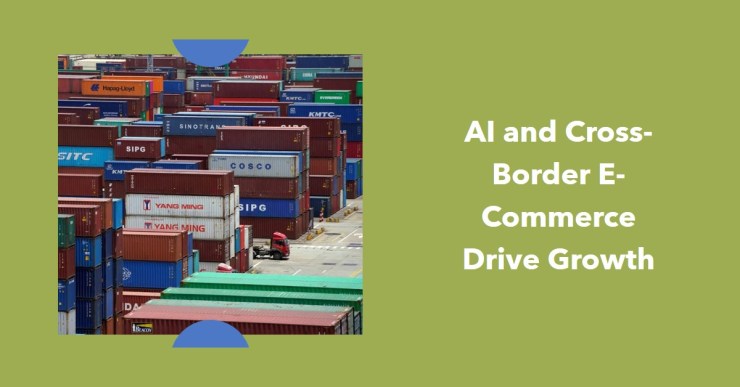ecommerce
Amazon’s Monopoly May Be Ending Soon! The FTC’s Lawsuit Could Change Everything

In the dynamic landscape of online commerce, Amazon has emerged as a behemoth, dominating the e-commerce scene with its vast product offerings, convenient delivery services, and Prime membership program. However, this dominance has not gone unnoticed by regulators, as the Federal Trade Commission (FTC) has launched a major antitrust lawsuit against the company, alleging that Amazon has abused its market power to stifle competition and harm consumers.
Understanding the FTC’s Allegations
The FTC’s lawsuit, filed in September 2023, paints a picture of Amazon’s alleged anticompetitive practices, highlighting several key areas of concern:
- Preferential Treatment of Amazon-Branded Products: The FTC alleges that Amazon has been favoring its own products in search results, making it more difficult for third-party sellers to compete. This practice, known as “self-preferencing,” is a common antitrust concern, as it can distort consumer choice and hinder competition.
- Restrictive Contracts with Third-Party Sellers: The FTC accuses Amazon of imposing restrictive contracts on third-party sellers, preventing them from offering lower prices on competing platforms. These agreements, known as “most-favored-nation clauses,” limit sellers’ ability to shop around for better deals, potentially leading to higher prices for consumers.
- Leveraging Data to Undercut Competitors: Amazon’s vast trove of data on third-party sellers is a valuable asset, and the FTC alleges that Amazon has been using this data to undercut its competitors. By analyzing sales data and identifying best-selling products, Amazon can produce its own private-label versions at lower prices, squeezing out third-party sellers.
- Impeding Innovation and Growth: The FTC’s lawsuit suggests that Amazon’s practices stifle innovation and growth in the online retail market. By favoring its own products, limiting competition, and using data to undercut rivals, Amazon may be hindering the development of new products, services, and business models.
Potential Consequences for Amazon
The FTC’s lawsuit carries significant weight, and if the agency prevails, Amazon could face a range of consequences, including:
- Monetary Damages: Amazon could be forced to pay substantial damages to third-party sellers and consumers who have been harmed by its anticompetitive practices. These damages could be in the billions of dollars, significantly impacting Amazon’s financial performance.
- Divestiture: The FTC could order Amazon to divest itself of certain businesses or assets, such as its Prime subscription service or its advertising business. These divestitures could significantly alter Amazon’s business model and reduce its overall market power.
- Behavioral Injunctions: The FTC could impose behavioral injunctions on Amazon, requiring the company to change its business practices to comply with antitrust laws. These injunctions could limit Amazon’s ability to favor its own products, restrict contracts with third-party sellers, and use data to undercut competitors.
Impact on the Online Retail Landscape
The FTC’s lawsuit against Amazon has far-reaching implications for the online retail landscape, potentially affecting consumers, sellers, and competitors alike:
- Consumer Impact: If Amazon is found to have engaged in anticompetitive practices, consumers could benefit from lower prices, increased product choice, and greater innovation in the online retail market.
- Third-Party Seller Impact: Third-party sellers could see a boost in their businesses if Amazon’s practices are curtailed. With a more level playing field, sellers could offer more competitive prices, attract more customers, and expand their product offerings.
- Competitor Impact: Other online retailers, such as Walmart, eBay, and Target, could gain ground if Amazon’s dominance is reduced. These competitors could attract more sellers and consumers, leading to a more diversified and competitive online retail market.
Conclusion: A Pivotal Moment for Online Commerce
The FTC’s lawsuit against Amazon is a landmark case that could reshape the online retail landscape. If the FTC prevails, Amazon could face significant penalties and be forced to change its business practices. This could lead to lower prices, increased competition, and greater innovation for consumers, sellers, and the online retail industry as a whole. The outcome of this lawsuit will undoubtedly have a profound impact on the future of online commerce.
FAQs
What is the FTC lawsuit against Amazon about?
The FTC lawsuit against Amazon alleges that the company has abused its monopoly power in the online retail market. The FTC specifically accuses Amazon of:
- Preferencing Amazon-branded products in search results
- Signing agreements with third-party sellers that prevent them from offering lower prices on competing platforms
- Collecting vast amounts of data on third-party sellers and using that data to undercut them
What are the potential consequences for Amazon if the FTC lawsuit is successful?
If the FTC lawsuit is successful, Amazon could face a number of penalties, including:
- Monetary damages
- Divestiture
- Behavioral injunctions
What are the implications of the FTC lawsuit for consumers?
If the FTC is successful in its lawsuit, consumers could benefit from lower prices, increased product choice, and greater innovation in the online retail market.
What are the implications of the FTC lawsuit for third-party sellers?
Third-party sellers could see a boost in their businesses if Amazon’s practices are curtailed. With a more level playing field, sellers could offer more competitive prices, attract more customers, and expand their product offerings.
What are the implications of the FTC lawsuit for other online retailers?
Other online retailers, such as Walmart, eBay, and Target, could gain ground if Amazon’s dominance is reduced. These competitors could attract more sellers and consumers, leading to a more diversified and competitive online retail market.
When will the FTC lawsuit against Amazon be resolved?
It is unclear when the FTC lawsuit against Amazon will be resolved. The lawsuit is currently in the early stages, and it is likely to take several years to reach a final resolution.
What can I do to stay informed about the FTC lawsuit against Amazon?
You can stay informed about the FTC lawsuit against Amazon by following news coverage of the case, checking the FTC’s website for updates, and following legal experts on social media.
I’m concerned about Amazon’s anticompetitive practices. What can I do?
If you are concerned about Amazon’s anticompetitive practices, you can contact the FTC and file a complaint. You can also support organizations that are working to promote competition and protect consumers.
What is the future of online retail?
The future of online retail is uncertain, but the FTC lawsuit against Amazon could have a significant impact. If the FTC is successful in its lawsuit, Amazon could be forced to change its business practices, which could lead to a more competitive and innovative online retail market.
Economy
UBS: AI and Cross-Border E-Commerce Drive Growth for Chinese Internet Firms in 2024

Introduction
Chinese internet firms are set to continue their growth trajectory in 2024, with artificial intelligence (AI) and cross-border e-commerce being key drivers of expansion, according to a report by Swiss bank UBS. Despite facing intense domestic competition, China’s e-commerce platforms are ramping up their overseas expansion efforts. This is in line with the bank’s analysis that cross-border e-commerce is a bright spot for Chinese internet firms, with the global e-commerce market expected to reach $6.4 trillion by 2024.
AI is also identified as a main theme for Chinese internet companies, with many firms investing heavily in the technology. However, monetization continues to be a challenge, with companies struggling to turn their AI capabilities into profitable ventures. Nevertheless, UBS believes that AI will remain a key growth driver for Chinese internet firms in the years to come.
As China’s internet firms continue to expand their reach both domestically and internationally, the country’s tech sector is set to play an increasingly important role in the global economy. With AI and cross-border e-commerce at the forefront of their growth strategies, Chinese internet firms are poised to capitalize on these bright spots in the industry.

Key Takeaways
- Chinese internet firms are set to continue their growth trajectory in 2024, with AI and cross-border e-commerce being key drivers of expansion.
- China’s e-commerce platforms are ramping up their overseas expansion efforts, in line with the bank’s analysis that cross-border e-commerce is a bright spot for Chinese internet firms.
- AI is identified as a main theme for Chinese internet companies, with many firms investing heavily in the technology.
AI as a Growth Driver for Chinese Internet Firms
The rapid development of Artificial Intelligence (AI) has become a key driver for the growth of Chinese internet firms. According to a report by UBS, AI remains a main theme for Chinese internet companies, as it provides new opportunities for innovation and growth.
Monetisation Challenges in AI
Despite the potential benefits, monetisation of AI continues to be a challenge for Chinese internet firms. UBS notes that while AI is being used in a variety of applications, including facial recognition, natural language processing, and autonomous driving, there is still a lack of effective business models to monetise these technologies. This is particularly true for companies that are still in the early stages of developing their AI capabilities.
AI Innovations and Advancements
Despite the challenges, Chinese internet firms are continuing to make significant advancements in the field of AI. For example, Alibaba has developed a new AI-powered virtual assistant that can help customers find products more easily. The company is also using AI to improve its logistics and supply chain operations, which has helped to reduce costs and improve efficiency.
Similarly, Tencent is using AI to enhance its social media platforms, including WeChat and QQ. The company has developed a new AI-powered chatbot that can help users find information more quickly and easily. Tencent is also using AI to improve its advertising capabilities, which has helped to increase revenues and improve profitability.
In conclusion, AI is becoming an increasingly important growth driver for Chinese internet firms. While there are still challenges to be overcome, companies are continuing to make significant advancements in the field of AI, which is helping to drive innovation and growth across the industry.
Cross-Border E-Commerce Expansion
In 2024, Chinese internet firms are leveraging Artificial Intelligence (AI) to expand their cross-border e-commerce operations, which have become one of the bright spots in the industry. As per a report by UBS, China’s e-commerce platforms are facing intense competition domestically, which is driving them to expand their operations overseas.
Strategies for Overseas Markets
To expand their cross-border e-commerce operations, Chinese internet firms are adopting various strategies. One of the most popular strategies is to partner with local firms in the target market. This helps them to leverage the local knowledge and expertise of the partner firm and gain a foothold in the market quickly. For example, JoyTelecom is providing cross-border e-commerce services to the Chinese population, while Insilico Medicine is leveraging AI to discover new drugs. Cloopen, on the other hand, is expanding its global business by providing cloud-based communication services to overseas clients.
Domestic Competition and Global Aspirations
Chinese e-commerce platforms are facing intense competition domestically, which is driving them to expand their operations overseas. The domestic market is crowded, and the competition is intense, which makes it difficult for these firms to grow. However, by expanding overseas, these firms can tap into new markets and gain access to new customers.
Moreover, Chinese internet firms have global aspirations, and they want to become leading players in the global e-commerce market. To achieve this goal, they are leveraging AI to improve their operations and gain a competitive edge. However, monetization remains a challenge for these firms, and they need to find new ways to generate revenue from their operations.
In conclusion, Chinese internet firms are leveraging AI and expanding their cross-border e-commerce operations to tap into new markets and gain access to new customers. By partnering with local firms and adopting innovative strategies, these firms are well-positioned to become leading players in the global e-commerce market.
UBS Analysis on Internet Firms in 2024
Market Trends and Predictions
According to UBS, AI and cross-border e-commerce are the two bright spots for Chinese internet firms in 2024. Chinese e-commerce platforms are facing intense domestic competition, and as a result, they are ramping up their overseas expansion. The Swiss bank predicts that this trend will continue in the coming years, as these companies seek to expand their customer base beyond China.
UBS also notes that AI remains a main theme for Chinese internet companies, with many firms investing heavily in this area. However, monetization continues to be a challenge, and companies are still trying to figure out how to generate revenue from their AI initiatives.
Financial Outlook for Chinese E-Commerce
Despite the challenges facing Chinese e-commerce platforms, UBS is optimistic about their financial outlook. The bank predicts that the industry will continue to grow at a rapid pace in the coming years, driven by factors such as rising disposable incomes, increasing internet penetration, and the growing popularity of online shopping.
UBS notes that while the industry is likely to face challenges such as intense competition and regulatory hurdles, the long-term outlook for Chinese e-commerce remains positive. The bank predicts that the industry will continue to be a major driver of growth in the Chinese economy and that it will play an increasingly important role in the global e-commerce market.
Overall, UBS’s analysis suggests that Chinese internet firms are well-positioned to capitalize on the opportunities presented by AI and cross-border e-commerce. While there are certainly challenges to be faced, the bank is confident that these firms will continue to grow and thrive in the coming years.
Frequently Asked Questions
How are Chinese internet firms leveraging AI for global market expansion?
Chinese internet firms are leveraging AI in various ways to expand their global market presence. One way is through the use of AI-powered chatbots and virtual assistants to enhance customer service and support. These tools can help Chinese firms provide 24/7 customer service in multiple languages, improving the customer experience and building brand loyalty.
Another way Chinese internet firms are leveraging AI for global market expansion is through the use of AI-powered supply chain management systems. These systems can help Chinese firms optimize their logistics and inventory management, reducing costs and improving efficiency. This can give Chinese firms a competitive advantage in cross-border trade.
What strategies are Chinese e-commerce companies adopting for cross-border trade?
Chinese e-commerce companies are adopting various strategies for cross-border trade. One strategy is to partner with local logistics and distribution companies in target markets, allowing them to more easily reach customers and fulfill orders. Another strategy is to use cross-border e-commerce platforms, such as Alibaba’s Tmall Global, to sell directly to consumers in other countries.
What challenges do Chinese firms face in monetizing AI technologies?
One of the main challenges Chinese firms face in monetizing AI technologies is the lack of clear business models for AI-powered products and services. While AI has the potential to drive significant value for businesses, it can be difficult to monetize without a clear understanding of how to price and sell AI-powered products and services.
Another challenge Chinese firms face in monetizing AI technologies is the high cost of developing and deploying AI systems. AI requires significant investments in data infrastructure, talent, and computing resources, which can be a barrier to entry for many firms.
Which AI technologies are Chinese companies focusing on for competitive advantage?
Chinese companies are focusing on various AI technologies for competitive advantage, including natural language processing, computer vision, and machine learning. These technologies can be used to improve customer service, optimize supply chain management, and enhance product development and marketing.
How is China’s AI governance initiative influencing international AI development?
China’s AI governance initiative is having a significant impact on international AI development. The initiative includes policies and regulations aimed at promoting the responsible development and use of AI, as well as investments in AI research and development. This is helping to position China as a leader in AI development and is driving increased collaboration and competition in the global AI industry.
What advancements in AI chip technology are emerging from China?
China is making significant advancements in AI chip technology, with companies such as Huawei, Alibaba, and Baidu investing heavily in chip development. These chips are designed specifically for AI workloads, offering improved performance and energy efficiency compared to traditional CPUs and GPUs. This is helping to drive innovation in AI applications and is positioning China as a leader in AI chip development.
Business
10 Best Tips to Set up your Shopify, Amazon, and Etsy Stores to Succeed as a Seller

Introduction
Today’s Era is the age of Digital Platforms and Marketplaces World Wide. Online marketplaces like Shopify, Amazon, and Etsy have made it easier than ever for entrepreneurs and beginners to start their online businesses. However, with so many sellers vying for the attention of customers, it can be challenging to stand out from the crowd. This guide will provide you with the top 10 tips to set up your Shopify, Amazon, and Etsy stores to succeed as a seller. Whether you’re a beginner or an experienced entrepreneur, these tips will help you create a successful online business.

10 Best Tips to Set Up Your Shopify, Amazon, and Etsy Stores to Succeed as a Seller
- Choose the right platform: Select the platform that best suits your business needs. Shopify, Amazon, and Etsy are popular choices for online sellers.
- Create a professional store: A professional-looking store is essential to attract customers. Use high-quality images and write clear product descriptions. Make sure your store is easy to navigate and has a clean design.
- Optimize your product listings: Use relevant keywords in your product titles and descriptions to improve your search rankings. Make sure your product descriptions are detailed and accurate.
- Offer competitive pricing: Research your competitors’ prices and offer competitive pricing to attract customers. Consider offering discounts or promotions to encourage customers to make a purchase.
- Provide excellent customer service: Respond to customer inquiries promptly and provide excellent customer service to build customer loyalty. Ensure your customers are satisfied with their purchases and address any issues they may have.
- Use social media: Promote your store on social media platforms like Facebook, Instagram, and Twitter to reach a wider audience. Share high-quality images of your products and engage with your followers.
- Offer free shipping: Consider offering free shipping to attract more customers. You can also offer free shipping for orders over a certain amount.
- Run promotions and discounts: Offer promotions and discounts to encourage customers to make a purchase. You can offer discounts for first-time customers or customers who refer their friends.
- Track your sales and analytics: Use analytics tools to track your sales and monitor your store’s performance. This will help you identify areas where you can improve and make data-driven decisions.
- Stay up-to-date with industry trends: Keep up-to-date with the latest industry trends and adjust your strategy accordingly. Attend industry events and conferences, read industry publications, and network with other sellers.
Conclusion
Setting up a successful online business requires careful planning and execution. By following these 10 tips, you can set up your Shopify, Amazon, and Etsy stores to succeed as a seller. Remember to choose the right platform, create a professional store, optimize your product listings, offer competitive pricing, provide excellent customer service, use social media, offer free shipping, run promotions and discounts, track your sales and analytics, and stay up-to-date with industry trends. With these tips, you’ll be well on your way to creating a successful online business. Good luck!
Business
Pakistani Freelancers Rejoice: Receiving PayPal Payments Now a Reality!

ISLAMABAD, January 7, 2024: In a major boost for Pakistan’s thriving freelance industry, IT Minister Umar Saif announced today that Pakistani freelancers can now receive payments through the global online platform PayPal. This marks a significant development, removing a longstanding hurdle for countless talented individuals contributing to the country’s digital economy.
Previously, Pakistani freelancers faced limitations due to PayPal’s unavailability in the country. This meant relying on alternative, often less convenient, methods for receiving international payments, hindering their ability to compete globally. However, the new initiative, spearheaded by the government, removes this barrier, opening doors to wider opportunities and increasing earnings for Pakistani freelancers.

“The good news is that Pakistani freelancers will now be able to receive money through PayPal,” declared Minister Saif in a video message shared by the IT ministry. “And we have created this program so that you don’t have to open a PayPal account in Pakistan to receive payments.” This crucial aspect of the program addresses concerns about regulatory restrictions and simplifies the process for both freelancers and their clients.
Under the new system, international clients can seamlessly transfer funds to Pakistani freelancers through their existing PayPal accounts. The funds will then be directed to a designated partner platform accessible to the freelancer in Pakistan. This streamlined approach ensures secure and efficient transactions without the need for individual PayPal accounts within the country.
The news has been met with immense enthusiasm from the Pakistani freelance community. Many have hailed it as a game-changer, promising to unlock greater access to international projects and enhance their earning potential. This development is expected to further spur Pakistan’s thriving freelance sector, contributing to economic growth and job creation.
However, some questions remain concerning the specifics of the designated partner platform and the associated fees or limitations. The IT ministry has assured further details will be shared soon, providing clarity for freelancers eager to leverage this groundbreaking opportunity.
Overall, the removal of the PayPal barrier represents a significant victory for Pakistani freelancers. With access to this widely used platform, they can now confidently compete on the global stage, showcasing their talent and contributing to the nation’s digital future.
This news is undoubtedly cause for celebration, marking a major leap forward for Pakistan’s burgeoning freelance community. As more details emerge and the program begins operation, it will be exciting to witness its positive impact on the lives and careers of countless Pakistani freelancers.
-
Digital3 years ago
Social Media and polarization of society
-
Digital3 years ago
Pakistan Moves Closer to Train One Million Youth with Digital Skills
-
Digital3 years ago
Karachi-based digital bookkeeping startup, CreditBook raises $1.5 million in seed funding
-
News3 years ago
Dr . Arif Alvi visits the National Museum of Pakistan, Karachi
-
Kashmir3 years ago
Pakistan Mission Islamabad Celebrates “KASHMIRI SOLIDARITY DAY “
-
Digital3 years ago
WHATSAPP Privacy Concerns Affecting Public Data -MOIT&T Pakistan
-
Business2 years ago
Are You Ready to Start Your Own Business? 7 Tips and Decision-Making Tools
-
China3 years ago
TIKTOK’s global growth and expansion : a bubble or reality ?

















